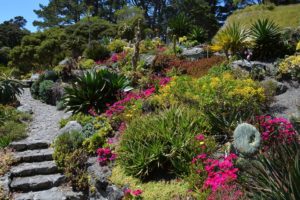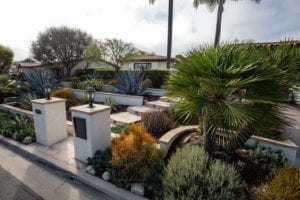Xeriscaping has emerged as an essential practice for homeowners in Orange County, California, aiming to conserve water and maintain an eco-friendly landscape. With its arid climate and limited water resources, Orange County demands a shift towards sustainable landscaping. Embracing xeriscaping not only preserves water but also promotes the growth of native plants, reduces maintenance, and ultimately creates a vibrant and environmentally conscious community.
This comprehensive step-by-step guide provides a detailed approach to implementing xeriscaping techniques tailored for the unique environment and needs of Orange County.

Understanding the Concept of Xeriscaping
Xeriscaping, derived from the Greek word “xeros” (meaning dry), refers to a landscaping method designed to minimize water usage. Unlike traditional landscaping, xeriscaping focuses on utilizing native plants, efficient irrigation systems, and appropriate soil management to create visually appealing, sustainable landscapes. In Orange County, where water conservation is crucial, xeriscaping offers a practical and efficient solution to maintain vibrant outdoor spaces while reducing water consumption.

Step 1: Assessing Your Landscape and Designating Hydrozones
Before initiating any xeriscaping project, carefully evaluate your property’s landscape and designate hydrozones, considering the specific water and sunlight requirements of each area. Utilize resources such as grid paper and observe the sun and water patterns within your yard. Understanding the hydrozones will facilitate the creation of an efficient and sustainable xeriscape plan, optimizing water use for various plant species.
Step 2: Researching Drought-Tolerant Plants Native to Orange County
Selecting drought-tolerant plants native to Orange County is crucial for the success of your xeriscaping project. Explore local nurseries and resources that provide information on plants that thrive in the specific soil and climate conditions of Orange County. Consider factors such as soil type, drainage, and sun exposure to ensure the successful integration of native plants into your xeriscape design.
Step 3: Removing the Grass Lawn and Implementing Turf Replacement
Replacing water-intensive grass lawns with xeric gardens is a pivotal step in promoting sustainable landscaping practices. Consider various methods such as sheet mulching or manual removal to prepare the ground for the installation of drought-tolerant plants and low-water landscaping features. Explore available turf replacement programs that aid homeowners in the removal of grass lawns, making the transition to xeriscaping more accessible and efficient in Orange County.
Step 4: Designing and Implementing Water-Efficient Landscapes
Crafting a water-efficient landscape design is essential in Orange County. Employ techniques such as creating natural swales, installing permeable hardscapes, and using mulch to minimize water loss and promote soil moisture retention. Design your xeriscape layout according to the designated hydrozones, ensuring optimal water use and fostering the growth of a diverse range of drought-tolerant plant species native to Orange County.
Step 5: Installing Efficient Irrigation Systems and Rainwater Harvesting Techniques
In a region where water conservation is paramount, the installation of efficient irrigation systems is crucial. Consider utilizing drip irrigation and rainwater harvesting techniques to minimize water wastage and ensure the optimal hydration of your xeric garden. Implement smart irrigation technologies that regulate water usage based on specific plant needs and environmental factors, contributing to the sustainability of your landscape in Orange County.
Step 6: Maintaining and Monitoring Your Xeriscaped Landscape
Regular maintenance and monitoring are essential to preserving the longevity and vibrancy of your xeriscaped garden in Orange County. Schedule routine inspections of the irrigation system, remove invasive species, and adjust watering schedules based on seasonal changes and plant requirements. Stay proactive in soil management, ensuring the optimal nutrient balance and soil structure necessary for the thriving growth of drought-tolerant plants in Orange County.

Xeriscaping serves as a practical and sustainable solution for homeowners in Orange County, enabling them to maintain visually appealing landscapes while conserving water resources. By following the comprehensive step-by-step guide provided in this resource, homeowners can actively contribute to the preservation of the environment and the promotion of sustainable landscaping practices in Orange County. Let’s collectively embrace xeriscaping as a commitment to a greener, more sustainable future for Orange County and beyond.
Check out 12 Helpful Gardening Tips and Tricks for more ideas.


